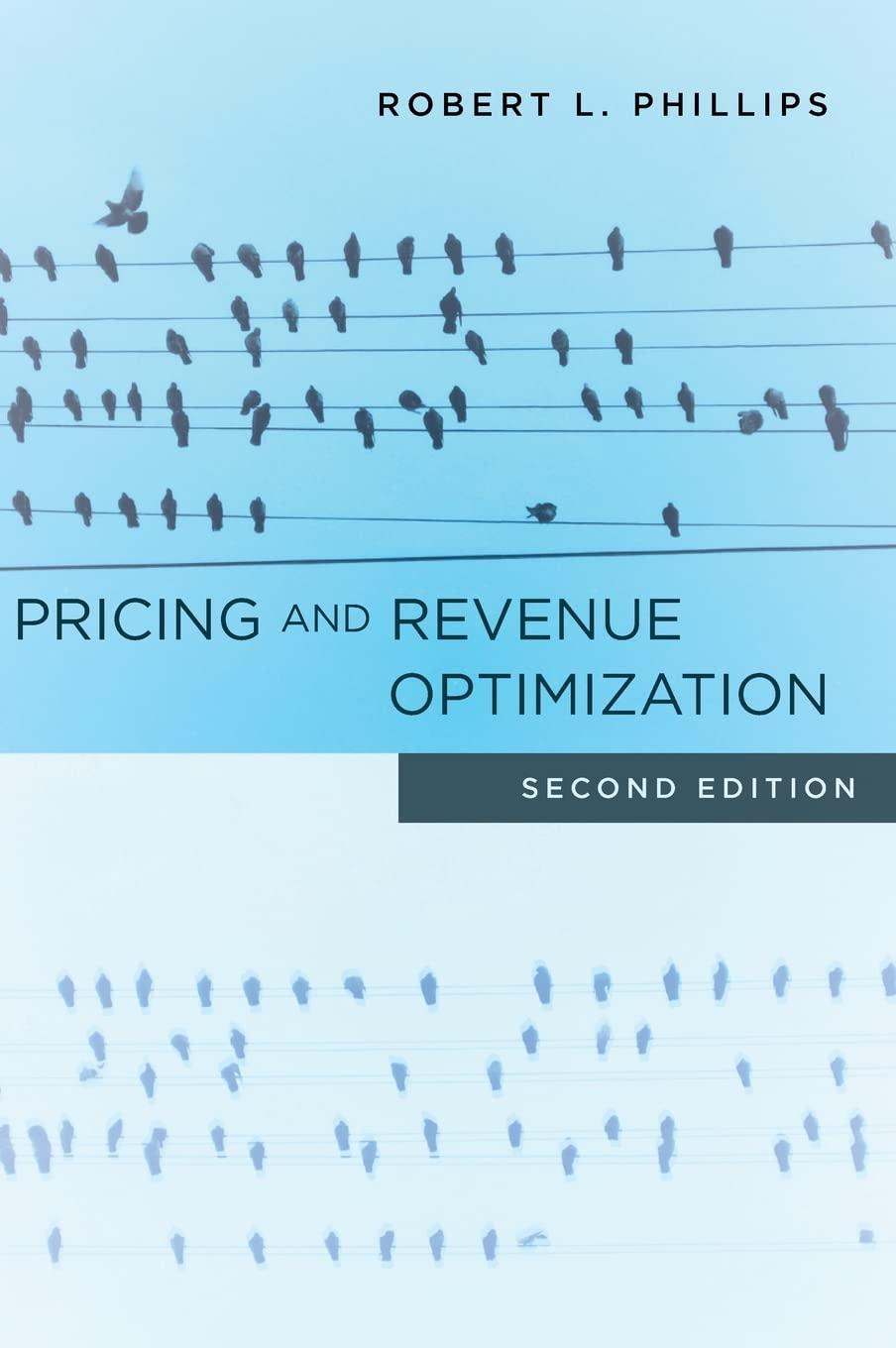CU Airlines operates two flights, one from New York to Phoenix and another one from Phoenix to
Question:
CU Airlines operates two flights, one from New York to Phoenix and another one from Phoenix to San Francisco. It sells a full fare and a discount fare for each leg, and a single fare for the combined leg from New York to San Francisco. The airline has assigned a 120-seat aircraft for the first flight and a 100-seat aircraft for the second flight. The demand for each fare is assumed to be random and normally distributed.
The fares and demands for these flights are shown in the following table.
Number ODF Fare Demand mean Demand std. dev.
1 NYC-PHX full fare $300 30 6 2 NYC-PHX discount fare $200 70 20 3 PHX-SFO full fare $250 20 5 4 PHX-SFO discount fare $150 50 15 5 NYC-SFO fare $300 40 15
a. Formulate the problem as a deterministic network linear program using the means. What is the optimal allocation and revenue?
b. To incorporate the uncertainty of demands, the chief science officer wants you to use virtual nests for each leg. For each flight, you will have three buckets—one for each ODF. The average contribution to each flight from the NYC-SFO fare is distributed proportionally according to the discount fares for each flight. How would you set the buckets for each flight? Use EMSR-b to calculate the protection levels for each bucket on each flight. How do the protection levels compare to the allocation you obtained in part a?
Step by Step Answer:







